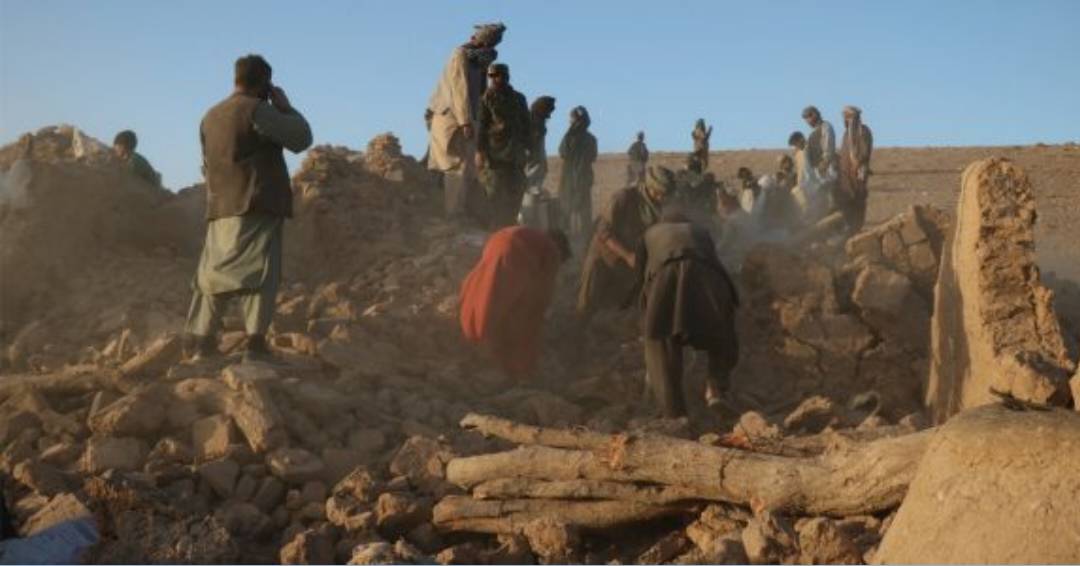
The death toll resulting from a series of formidable earthquakes in western Afghanistan experienced a sharp increase on Sunday, surging beyond 2,000 lives lost, as reported by a government spokesperson.
“2,053 martyrs were killed in 13 villages. 1,240 people are injured. 1,320 houses were completely destroyed,” stated Taliban government spokesman Zabihullah Mujahid, referencing the disaster management agency via social media platform X, previously known as Twitter.
According to the UN Office for the Coordination of Humanitarian Affairs, 465 houses lay in ruins, with an additional 135 suffering damage. The UN noted the likelihood of increasing casualties as search and rescue missions persist, with concerns regarding potential individuals trapped beneath collapsed structures. Mohammad Abdullah Jan, spokesperson for the disaster authority, revealed that the Zenda Jan district in Herat province bore the brunt of the quake and aftershocks.
The United States Geological Survey indicated the earthquake’s epicenter approximately 40 kilometers (25 miles) northwest of Herat city. Following the initial quake, three substantial aftershocks of magnitudes 6.3, 5.9, and 5.5 occurred, along with lesser tremors. Herat city resident Abdul Shakor Samadi described at least five powerful tremors around noon, leading to widespread evacuations and fears of further seismic activity.
“All people are out of their homes,” Samadi stated. “Houses, offices, and shops are all empty, and there are fears of more earthquakes. My family and I were inside our home; I felt the quake.” He recounted the immediate panic within his family, prompting them to flee outdoors.
The World Health Organization in Afghanistan responded by dispatching 12 ambulance cars to Zenda Jan to evacuate casualties to hospitals. They also provided assistance in hospitals, particularly for the wounded, and assessed additional needs. WHO-supported ambulances played a crucial role in transporting those affected, primarily women and children.
In Herat, telephone connections went down, hindering efforts to gather information from affected areas. Social media videos depicted hundreds of people taking to the streets outside their homes and offices in Herat city, while the province shares a border with Iran.
Reports emerged of the earthquake being felt in neighboring Afghan provinces, including Farah and Badghis. Abdul Ghani Baradar, the Taliban-appointed deputy prime minister for economic affairs, conveyed his condolences to those affected in Herat and Badghis.
The Taliban issued appeals to local organizations, urging swift action in reaching earthquake-stricken areas to aid in transporting the injured to hospitals, providing shelter for the displaced, and delivering essential food supplies to survivors. They implored security agencies to utilize all available resources and facilities for the rescue of individuals trapped beneath debris, while also calling upon their fellow compatriots to offer any feasible cooperation and assistance to those afflicted.
Notably, in June 2022, eastern Afghanistan experienced a devastating earthquake in a rugged, mountainous region, resulting in the destruction of stone and mud-brick homes. This earthquake, the deadliest in Afghanistan in two decades, claimed at least 1,000 lives and left around 1,500 individuals injured.

Post Your Comments